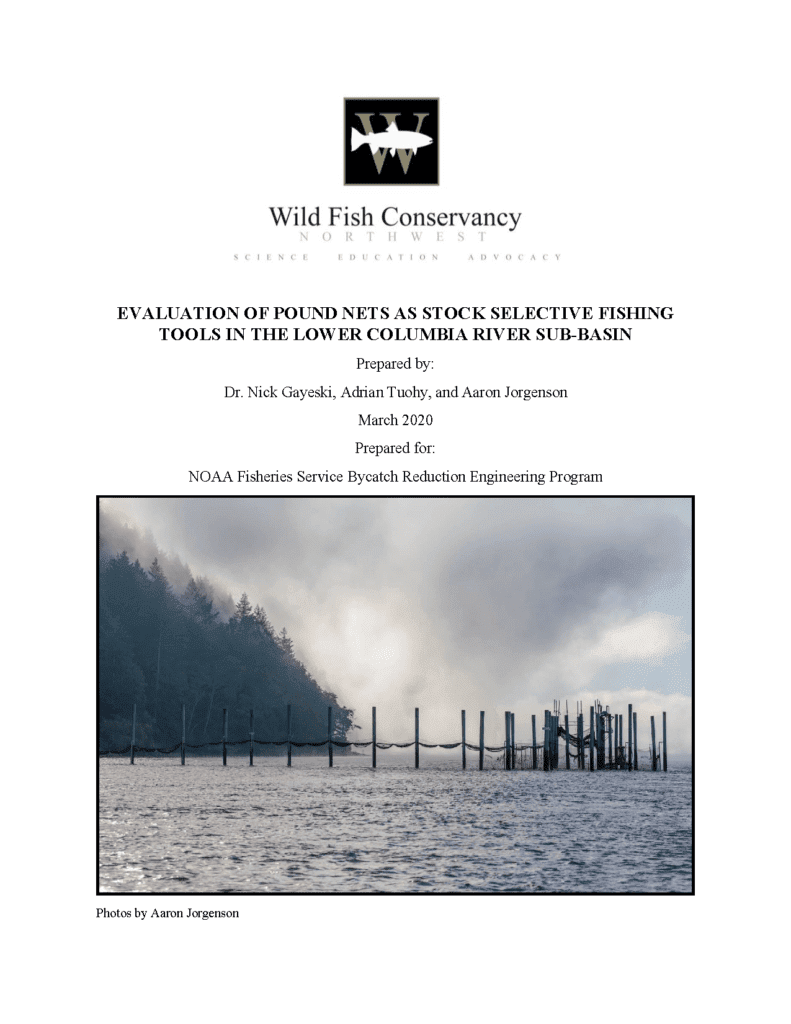
Description |
|---|
Prepared for : NOAA Fisheries Service Bycatch Reduction Engineering Program | Gill nets and other conventional harvest techniques used in mixed-stock commercial salmon fisheries frequently result in bycatch mortality, impacting Endangered Species Act (ESA)-listed wild salmonid populations and constraining fishing opportunities in the U.S Pacific Northwest. To address the problem, studies were conducted in the lower Columbia River, WA evaluating the potential of commercial salmon traps for stock-selective harvest and bycatch mortality reduction. Expanding upon a 2016 pilot study, WA State’s first commercial fish trap since 1934 was constructed and operated under a variety of tidal stages, light levels, and weather conditions between August–September 2017 and May–October 2019. Post-release survival of bycatch was estimated through paired release-recapture in 2017 and a combination of paired-release recapture and net pen holding in 2019. Results demonstrated that the fish trap effectively targeted hatchery reared fall Chinook (Oncorhynchus tshawytscha) and coho salmon (O. kisutch) while reducing bycatch mortality rates relative to conventional commercial gears. During the late-summer and fall 2017 study period, the relative cumulative survival effect over a 400 km migration ranged from 0.944 (𝑆𝐸̂= 0.046) for steelhead (O. mykiss) to 0.995 (𝑆𝐸̂= 0.078) for fall Chinook salmon. Investigating salmonid survival through two separate techniques in 2019, a substantially modified fish trap design demonstrated no detectable cumulative survival effect and a significant improvement over the 2017 prototype trap design. Through paired release-recapture, the relative cumulative survival effect over a 400-km migration was 1.017 (𝑆𝐸̂ = 0.032) for adult sockeye salmon (O. nerka). For adult coho salmon held captive for a 48-h post-release period, survival was 1.000 (CI (S ≥ 0.978) = 0.95). These results suggest that modified fish traps can achieve essentially 100% survival of salmonid bycatch and provide evidence that the gear may be effective in addressing existing ESA constraints in summer and fall commercial salmon fisheries of the lower Columbia River. |
File Attachment |
|---|
Download |
Join our mailing list to recieve important updates on our work, the latest wild fish news, & opportunities to take action to support wild fish.
This site is protected by reCAPTCHA and the Google Privacy Policy and Terms of Service apply.
Wild Fish Conservancy is recognized as a 501(c)3 non-profit by the IRS